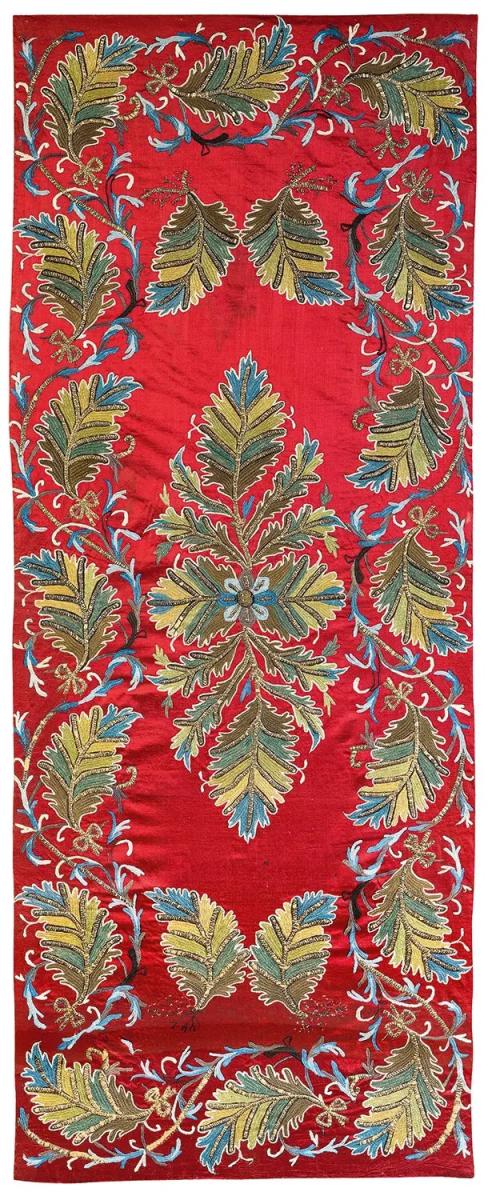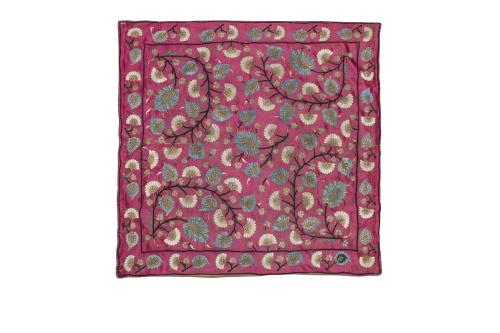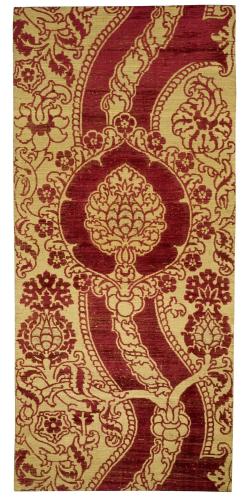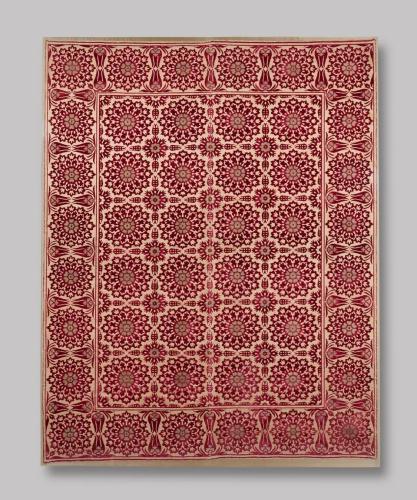

Price on application
This object is eligible for a Certificate of BADA Provenance
The BADA Standard
- Since 1918, BADA has been the leading association for the antiques and fine art trade
- Members are elected for their knowledge, integrity and quality of stock
- Our clients are protected by BADA’s code of conduct
- Our dealers’ membership is reviewed and renewed annually
- Bada.org is a non-profit site: clients deal directly with members and they pay no hidden fees
Pair of Fine Ottoman Embroidered Silk Ceremonial Covers.
Turkey or Italy.
17th Century.
Dimensions: 225 x 58 cm.
Brocaded silk with a pattern of palmettes, roses, carnations and other flowers. This decorative repertoire is very similar to, and in some cases has directly inspired, the designs of poly-chrome Iznik ceramics. It consists of a determining floral decoration which has in fact shaped the aesthetics of the so-called Classical Ottoman style. Primarily formed under the supervision of the great court illuminator Kara Memi, this style mainly consists of ogival patterns with saz leaves or floral sprays. This very high quality silk brocade can be paired with an almost identical Ottoman kemha from the Swedish Royal Collection in Stockholm (inv. no. 113), which has been published in İpek – The Crescent and the Rose – Imperial Ottoman Silks and Velvets (2001), p. 248. Geijer has noted that this silk used to cover the ‘violet bed’ in the Swedish royal household. The initials with which this kemha was stamped are those of Queen Hedvig Eleanora (r. 1654-1660). Exchange of ideas and inspiration left its mark on local taste which can be clearly observed in works of art such as the present imperial kemha. Similar silks, clearly drawing inspiration from Ottoman aesthetic, were favoured in Italy, the Ottoman elite on the other hand was fascinated with Renaissance material culture, please see; Nurhan Atasoy, 2001, figs. 42, 43 & 49 and Gürsu, N., The Art of Turkish Weaving: Designs through the Ages, Redhouse Press, Istanbul, 1988, cat.131.
Valuable textiles constituted an indispensable element of Ottoman ceremonial, in the forms of costumes, banners, wall-hangings, curtains and ground-coverings they lent visual magnificence to precessions and receptions, and as ‘robes of honour’ (hil’at) bestowed on court servants and foreign diplomats. They were unmistakable signifiers of the sultan’s power and generosity. Their symbolic importance was reflected in both the action and language of the court. High Ottoman officials kissed the hem of the Sultan’s garment and spoke of ‘wearing the robe of continuance of office’, while the sultan himself was said to don ‘the mantle of authority’. The ceremonial kaftans and other garments in the collection of the Topkapi Palace Museum, testify to the dazzling impression that textiles undoubtedly made at state functions. Velvets and silks brocaded with threads of precious metal (kemha) were largely worn by the royal family and imperial slave household. Precious silk costumes and textiles were used particularly during the accession of sultans, the ceremony of the girding of the sword (kılıç kuşanma), parades, receptions. These have always been treasured and collected by Turkish and foreign patrons as signs of power. Similar ceremonial textiles have been depicted in detail in Talikizade’s Eğri Fetihnamesi which documents the Ottoman victory against the Habsburgs in 1596. The Eğri Fetihnamesi, preserved in the Topkapi Palace Museum Library (TSM H.1609), includes a double page miniature depicting the arrival of Sultan Mehmed III (r.1595-1603) in Istanbul following the victorious campaign. (fol.68b-69a). In the miniature, pages and palatial officials attending the ceremony have been depicted holding juxtaposed brocaded silks before the rest of the attendants (Osmanlı Resim Sanatı (2006), p.181. Also see: İpek – The Crescent and the Rose – Imperial Ottoman Silks and Velvets (2001), p. 26-27.). The details of the decoration on the silks depicted in the miniature draw close resemblance with the present textile. Moreover, even the narrow band running around the edges can be observed on the textiles in the miniature. The piece in hand, is an extremely rare piece, both in terms of its artistic value and perfect condition.
The BADA Standard
- Since 1918, BADA has been the leading association for the antiques and fine art trade
- Members are elected for their knowledge, integrity and quality of stock
- Our clients are protected by BADA’s code of conduct
- Our dealers’ membership is reviewed and renewed annually
- Bada.org is a non-profit site: clients deal directly with members and they pay no hidden fees




